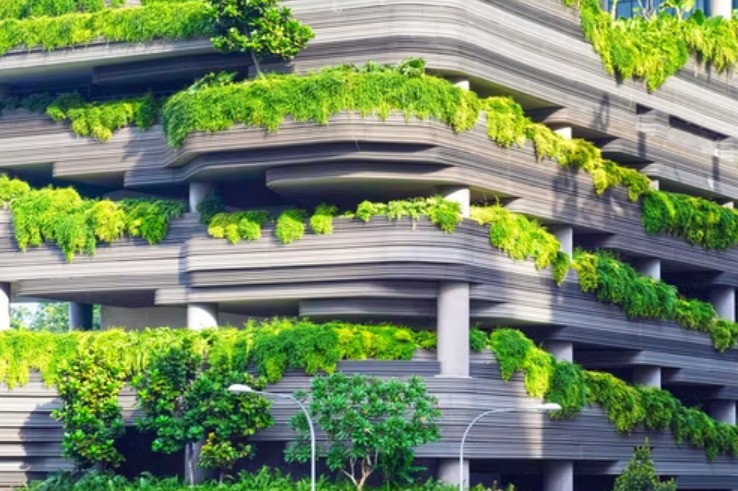Construction Techniques for Sustainable Building

The construction industry is a vital aspect of any civilization. Due to its long history, many people in this field are skeptical about change. However, due to the increasing demands of the changing times and new technologies, there are now significant movements and developments.
One of the driving trends pushing the construction industry toward developing new building methods is sustainability. Today, people in the industry are now finding ways to answer the many pressing issues brought by global warming and find other ways to optimize the systems we all utilize.
What Exactly Is Sustainable Construction?
Sustainable building involves utilizing recyclable and renewable materials in construction activities to minimize energy consumption and environmental contamination. The initiative's primary purpose is to reduce the industry's ecological effect by adopting sustainable construction methods, boosting resource utilization, and implementing green technologies.
While many businesses from many industries are working to become more environmentally aware, many are focusing their efforts on the construction industry, which is the major consumer of global resources. This industry alone consumes over half of all raw materials worldwide and generates significant waste. Thus, it can considerably minimize the consequences of global warming by eliminating obsolete procedures.
Eco-Friendly Construction Techniques
Many contractors now realize the value of using green or sustainable building practices. Many developments over the last decades contributed to significant advancements in materials, technology, and techniques that enable and encourage overall efficiency, particularly when it comes to resource and energy consumption.
Materials are one of the most effective ways to incorporate sustainability into the building. Technological breakthroughs have paved the way for a modern trend of more durable, lightweight, and sustainable construction materials, such as heavy-duty access doors, that can help push traditional techniques toward environmental sustainability.
These environmentally friendly materials also contribute by lowering the structures' carbon footprint. They accomplish the same thing as their non-renewable counterparts while being more attractive and practical. Sustainable construction entails the use of renewable materials and the implementation of strategies that support long-term sustainability. The following are a few examples of these techniques:
-
Selecting materials that are both sustainable and recyclable.
-
Reducing waste by restricting the materials utilized.
-
Constructing environmentally friendly structures.
-
Managing waste disposal, which includes trash sorting and recycling.
-
Improving conservation efforts through managing construction projects.
-
Transforming old buildings through adaptive reuse programs.
-
Using less energy.
-
Instances include on-site water treatment, smoking cessation, and recycling food containers.
Advantages of Sustainable Construction
Sustainability in construction is helpful not just to nature but also to the health of humankind. There are numerous proven advantages to implementing sustainable practices in the construction business, including:
1. Decreases Waste
Global warming has remained a constant source of concern for decades due to its increasingly visible effects on our world. Pollution and exploitation of our resources are higher than ever before. While we are approaching the tipping point, we can still use sustainable technical developments to mitigate or slow the impact of climate change.
Construction companies have begun to rely on sustainable resources and processes suitable for us and help clean up the environment.
2. Reduces the Cost of Materials
Sustainable approaches use environmentally friendly resources without sacrificing efficiency or structural integrity. Many of these objects can be recycled or repurposed. Biomaterials often utilized as sustainable building materials are as reliable and long-lasting as their non-renewable counterparts.
Energy efficiency is the principal focus and goal for green designers in building design. Building structures that get energy from natural resources like sun, wind, and water are extremely environmentally friendly.
3. Urges Cost-Cutting
Low maintenance costs are among the most significant advantages of sustainable buildings, which are possible by precisely developed design elements that reduce water and energy expenses. Decreased upkeep and operational costs translate to substantial savings that you can put toward higher staff compensation or product development.
Though the cost of construction may be higher than conventional non-renewable forms of design at the onset, these efficient plans can save money in the long run.
4. Promotes Healthier Living
It's no mystery that our physical, emotional, and mental well-being are all influenced by our environment. Designers and developers have created sustainable construction that significantly impacts overall health in green buildings throughout the last decades.
Thanks to the current age, we may expand and modernize daily equipment like adequate power resources, temperature, ergonomic aspects, and even air quality. The stress levels, health, and quality of life of those living or working in sustainable buildings have improved significantly.
Takeaway
Even though sustainable construction costs are higher at all project phases, well-known contractors and companies still pursue it due to its long-term advantages. The last few decades are why the adoption of sustainable processes and materials has been skyrocketing, lowering the price of sustainability in building.



